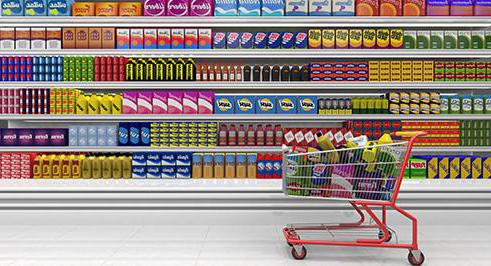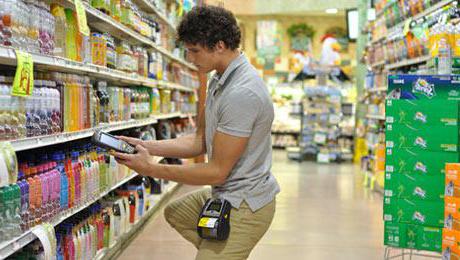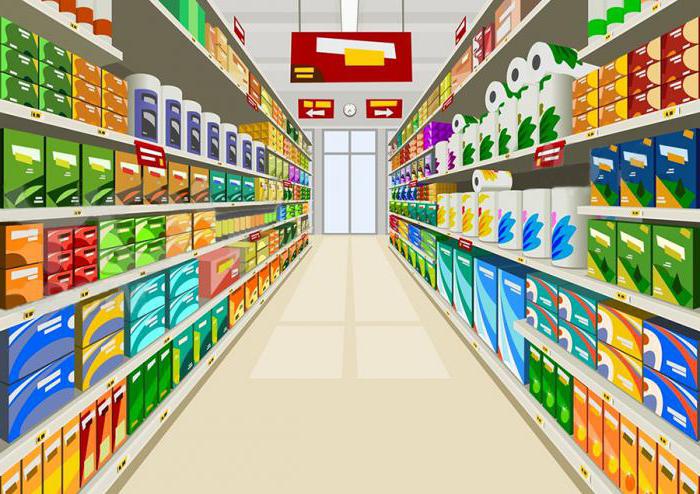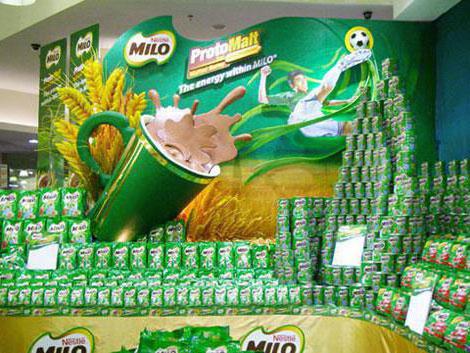If you have recently been looking for a job, then you most likely have seen many offers for the position of merchandiser. However, have you ever wondered what kind of profession this is? Based on the name, a person unfamiliar with this field of activity may think that this is some kind of rare specialization and people in this field do not communicate with him. But in fact, this is far from the case, because merchandiser is one of the most widespread professions today, and merchandising is not just a sphere of activity, it is a real art in which it is necessary to constantly improve. Want to know absolutely everything about it? Then this article is perfect for you. Merchandising is a field of activity that will never be exhausted, will always be relevant and today is an integral part of modern business. So what is it? What does the merchandiser do? It's time to find out more about this.
What is merchandising and what does a merchandiser do?

The first question you need to answer: what is this area of activity? As mentioned above, people unfamiliar with this profession may think that this is something exotic, but in fact it’s not so. And merchandisers surround you everywhere every day. If you go to the store, then with a high probability you will find them there. And if not, then you will definitely see the results of their work.
Merchandising is a real art of trading. In simple terms, this is the ability to demonstrate a product to a customer from store shelves. This means that within the framework of merchandising, specialized laying out of goods is carried out on shelves, as well as attracting the attention of buyers to this product in all available ways.
The emergence and active development of such a field of activity is due to modern reality. If earlier people simply came to the store to purchase a specific product, now a huge number of companies supply an even greater variety of product options, and it is difficult for the buyer to decide what kind of product he wants to purchase. Naturally, manufacturers and distributors use this to attract attention to their product. And merchandising is one of the most effective ways. After all, with its help you can force the visitor to purchase even the product that he did not initially need. All this is done by laying out the goods on the shelves and using additional factors and methods, which will be discussed a bit later.
Thus, the basics of merchandising can be determined quite simply - this is the presentation of the goods on the shelves in such a way that the buyer drew attention to him and chose your product, and not an analogue of a competitor. However, this is far from all that can be said about merchandising.
A bit of history

Now you know some of the basics of merchandising, so you should take a look at how it originated. As you can already understand, his story is rather short, since this type of activity itself appeared relatively recently.Two decades ago, merchandisers practically did not exist anywhere: suppliers delivered goods to stores, and store workers themselves put the goods on the shelves.
However, over time, the situation began to change, and a full-fledged history of merchandising began. As mentioned above, the variety of goods has become much greater, so there is a need to highlight your product against the background of similar products of a competitor. Practice has shown that high quality in this case does not play any significant role, because the buyer does not spend several hours in the store. Therefore, it will not be read into the composition of each of the similar products. He also does not want to try each of the proposed products, and if he does not send it, he will simply take what he likes at first glance and will take the same product further if its quality suits him.
To change this, companies began to train special professionals who took on the responsibility of displaying goods and visual presentation in the store. It was then that merchandising as such arose. The merchandising rules are simple: lay out a product so that it attracts the attention of customers more than competitors' products. In fact, there are much more rules, goals, and features, but first things first. Merchandising rules for each company may be different.
So, by the present moment merchandising has developed into a full-fledged sphere of activity. Each company has its own employees who are engaged in the promotion of specific products using a range of methods and tools. Of course, the story of merchandising does not stop there. This direction is actively developing, acquires new branches and directions, receives modern tools to increase efficiency and so on. So in the future, merchandising may become an even more developed area of activity, depending on the direction in which trade will develop.
Goals and objectives of merchandising

Now it's time to consider the specific tasks and goals of merchandising. After reading the first part of the article, you should have already had a general impression on this topic, but do not think that everything in this sphere of activity is very simple and lies on the surface. In fact, everything is a little more complicated. So, the main purpose of merchandising is to increase sales of a particular product through the specific display of this product in stores, as well as using other merchandising tools. As you can easily understand, in this area of activity the main goal will coincide with the one pursued by any marketing and advertising division. Accordingly, the tasks are similar, only in this case the main task is to stimulate the interest of the buyer right on the spot, in the store, where he is already in a situation in which he may or may not acquire a specific product. There are other, secondary goals, which, of course, also should not be forgotten. For example, the goals of merchandising include promoting a particular brand's products at retail points of sale, as well as building customer loyalty both to the point of sale where the product is sold and to the product itself, as well as to the manufacturer who manufactured this product.
Naturally, these are only the most important goals and tasks of merchandising, and in real conditions in specific situations other tasks and other goals can be set for merchandisers, but all of them will be somehow connected with stimulating interest and increasing sales of specific products.
Principles

Every entrepreneur wants his products to be popular, that people pay attention to it, buy, recommend to others, and so on. Simply put, everyone wants merchandising to work for him.But for this you need to make some effort. The beginning has already been made: you figured out what this area of activity is, and you also got an idea of what the main goals and objectives of merchandising are. Now it's time to pay attention to the basic principles of merchandising. Again, it is worth noting that the information provided in this article is not exhaustive. Here, as in the case of goals, you will find the basic principles, but in a specific situation they can change and supplement.
So, firstly, you need to ensure clear logistics. It sounds pretty simple, but in fact there is a huge amount of work. For merchandising to work like a clock for you, you need to make sure that the right amount of goods arrives at specific retail outlets on time, which would then be put on the shelves. If there are too few goods, your shelves will be “bare” and the store management may decide to move your products due to their shortage, and then take the vacant place with other products. If there is too much product, then it will be in the warehouse for a long time, which is also not a good factor, especially if the product has a not very long shelf life.
Secondly, you need to think about exactly how you want to present your goods to people. This means that you should consider in detail how your product will be displayed in order to get the highest possible response from customers, as well as decide which tools will be used to attract attention besides the display itself.
Thirdly, you should not forget about the atmosphere. As mentioned earlier, product display is the main component of merchandising. However, those people who believe that this type of activity is limited only by this will quickly become disappointed. Of course, at a basic level, displaying goods is a very effective way to attract attention, but do not forget that merchandisers work not only for you, so your competitors also take care to arrange their products in the most profitable and convenient way. Therefore, you need to create a certain atmosphere by connecting all the senses to the process. If possible, it is necessary to use aromas, a pleasant melody and other similar effects to attract as many customers as possible.
As you can understand, these principles and laws of merchandising are not binding, since this type of activity can exist without them. But the more clearly you follow the basic directions, the more impressive the effect you can see as a result.
Types and directions

Separately, it is worthwhile to dwell on the types of merchandising, since they can also play a very important role in your endeavors. It is worth noting immediately that, regardless of the direction of activity, they all have a common goal, which was already mentioned earlier. All types and directions of merchandising serve to increase sales and attract as many customers as possible. The differences are for more specific purposes, as well as ways to achieve them.
There are quite a few types and directions of merchandising, and it will be simply impossible to list all of them. Therefore, you should just look at the main types that each merchandising agency uses.
Specific species

First of all, it is necessary to consider cross-merchandising, which is used everywhere. What is he like? This is a type of merchandising, which is based on the placement of a number of products that complement each other. How can this be imagined in practice? For example, you are selling shoes, but with the help of cross-merchandising you can significantly increase the turnover of goods if you stand next to your shoes on the shelves to place goods that complement it. These include, for example, shoelaces, shoe polish, and so on. In general, the principle is pretty clear, but incredibly effective. A perfect example is how furniture stores approach cross-merchandising. They equip full-fledged rooms in which they exhibit the whole themed kitchen.The buyer comes and understands that he wants just such a room or several pieces of furniture from this room, which greatly increases the chances that he will buy not just one chair from the general exhibition, but a whole set of furniture.
It is also worth noting visual merchandising, which is no less popular and widespread. This is exactly what was discussed in the third principle of merchandising discussed above, that is, sounds, aromas, light and other options for addressing the various senses of the human body. With this type of merchandising, you can also attract many more people, as well as provoke unplanned purchases. The simplest example of using visual merchandising is what stores do during Christmas and New Year. If you go to the store, you will notice that the light there is more subdued, a classic New Year's song plays from the speakers, everywhere you can notice garlands, snowmen and other themed elements. Lately, aromatic marketing has also been widely used, that is, thematic aromas that can attract more customers. In this case, it may be the flavor of gingerbread, pine needles or other similar aromas that are associated with the winter holidays.
But if visual merchandising is located at one end of the spectrum, then technical merchandising can be found at the opposite end. This is a view that includes the use of a variety of technologies to improve and optimize the layout and presentation of goods to customers. Each merchandising agency uses this view, it is worth noting that few hear about it. This is due to the fact that technical merchandising always acts in the shade and does not give such obvious and impressive results, but it cannot be said that it is useless, because it brings great benefits.
Instruments

The next item, which needs to be considered more carefully, is merchandising tools. Actually, this is a very broad concept that includes almost everything related to the product, from the design of the store and the shelves on which the goods are displayed, to the staff uniform, advertising newspapers and even planning the flow of customers at the point of sale. One of the most important tools of a merchandiser is a planogram. This is a document that demonstrates how goods should be laid out on shelves in order to achieve maximum efficiency.
Moreover, each planogram may have its own characteristics, which are also worth paying attention to. Did you know that there are various types of calculations, each of which at a subconscious level affects the desire of customers to purchase a particular product. This sounds amazing, and many people at first refuse to believe in it, but studies show that the mind of the consumer can be easily manipulated if you approach this issue correctly.
As an example, there are several types of calculations. Horizontal layout is an alternation of popular and slow-moving goods, the purpose of which is to draw attention to slow-moving goods at the expense of running. When the buyer looks at the shelf where the goods are laid out using horizontal laying out, he sees popular products, but among them he notices not so popular options that he has to pay attention to, although in another situation he would not even look at them.
Unlike horizontal layout, vertical uses the opposite approach. Within the framework of this calculation, the goods are placed on shelves in accordance with their types, that is, such goods are placed on one rack on shelves that are one below the other.This allows people to find all the goods they need in one place, without spending too much time moving from one rack.
We should also talk about the display layout, which is different from others. Its feature is the fact that a separate zone is created for the display of goods, that is, a stand or stand, which attracts the attention of buyers. So the merchandiser can present their products in the best possible light, but it is far from always possible to obtain permission to place your own separate rack.
POS materials
Each merchandiser should know what POS materials are, as he will have to work with them on an ongoing basis. At first glance, it might seem that this is something unusual, but in fact it is a set of simple, but vital tools. The simplest example of a POS material is price tags that can be designed and arranged in such a way as to draw attention to the price of a product. Also such materials include flyers, posters, suspended stop-shelves and many other items that allow you to implement merchandising much more effectively. Product display, as you can see, is not the only tool.
Effective technology
The concept of merchandising includes the use of any means that will help increase sales of goods in the store. And that is why you need to get acquainted with the key technologies that experienced merchandisers use to most effectively promote their products.
Technology Examples
The Golden Shelf is a technology that is one of the key in merchandising. Its essence is that buyers most often first of all pay attention to those products that are located about 15-20 centimeters below the level of their eyes. Accordingly, if you know your target audience, you can draw a conclusion about the average approximate growth, and based on this, you can calculate which shelf will be “golden” for you. Retail merchandising is often built on the struggle between competitors for the "golden" shelves in stores.
A focal point is a technology that allows you to choose the perfect place to place goods already on a particular shelf. It turns out that the very center of the shelf is the most popular, since it is there that buyers primarily look. A slight shift to the right is also allowed, because the focus in people most often shifts to the right side, that is, as if they were reading a book, from left to right.
Eye movement is a technology that is closely related to the previous paragraph, where it has already been said that a person most often moves his eyes as if reading a book. Accordingly, you can conclude how to place the goods, imagining that the shelving is a book sheet. How would you move through it with your eyes if you read a book? Combine this with a “gold” shelf and a focal point, and you can develop the perfect strategy.
A return watch is a technology that is common to those who use merchandising in a store. Given that most people are right-handed, they move counter-clockwise around the store, so you can use this to expose your product as close to the entrance as possible on the customers ’path. The farther your product will be located on the trajectory, the more likely it is that customers will get everything they needed along the way and go past your shelf without paying any attention to your product.